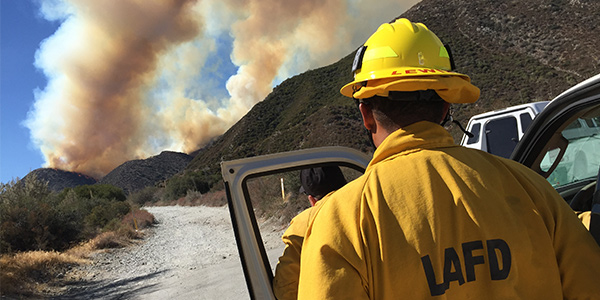FERC approved NERC reliability standard PRC-024-3 last week, capping a nearly two-year effort to ensure that inverter-based resources (IBR) — particularly solar panels — can “continue to support grid stability during defined system voltage and frequency excursions” (RD20-7).
Work on the new standard, which replaces the existing standard PRC-024-2, began in 2018 in response to the Inverter-Based Resource Performance Task Force’s (IRPTF) PRC-024-2 Gaps White Paper, which reviewed the widespread outages in solar generation caused by the Blue Cut fire of 2016 and Canyon 2 fire of 2017.
In the former incident, about 1,200 MW of solar photovoltaic resources tripped offline or momentarily ceased output; Canyon 2 resulted in about 900 MW of solar output tripping or momentarily ceasing. IRPTF concluded that errors in PRC-024-2 and a “misinterpretation of [its requirements] led to the intentional and unnecessary tripping of solar PV resources” during the fires.
New Standard to Deliver Clarity
The finished PRC-024-3 aims to clarify generator owners’ obligations to “remain connected during a specified transient frequency or voltage excursion.” It changes focus in particular on “no trip” zones — the range of voltages and frequencies within which generation resources must not trip or cease injecting current into the grid.
In its analysis, the IRPTF found that this concept was a significant source of confusion. For one thing, operators “could read the area outside the ‘no trip zone’ as ‘must trip,’” meaning that tripping or momentary cessation were required outside of the defined range; alternately, operators sometimes interpreted this area as “may trip,” believing that tripping was tolerated, though not required.
Furthermore, the frequency and voltage limits of the “no trip” zone were inconsistently defined in illustrations and tables. This combined with the misunderstanding over the definition of the “no trip” zone led to operators setting their resources to trip in areas not intended by the standard drafters.
The updated standard revises figures and tables to remove inconsistencies over the “no trip” zone limits while clarifying that generators are not required to trip outside this zone and that operators should aim to keep their resources online as much as possible. It also emphasizes that the standard applies to both synchronous and inverter-based generators through references to behavior such as momentary cessation that are specific to solar generators.
In addition, NERC’s standard drafting team made good on its previous announcement that the standard would not cover transmission owners, despite suggestions by industry respondents in a comment period last year to include TOs in the standard. (See Tx Owners to be Exempt from Inverter Standard.)
NERC’s Board of Trustees unanimously approved the modifications to PRC-024 at its February meeting. (See “Standards Actions,” NERC Board of Trustees Briefs: Feb. 6, 2020.)
CAISO Backs Proposed Standard
CAISO proposed in November 2018 incorporating performance requirements for inverter-based resources in a revised PRC-024 or developing a new standard for such resources and limiting PRC-024 to synchronous generation. Both standard authorization requests were rejected by NERC’s Standards Committee, which launched Project 2018-04 the following month. (See NERC to Try Again on Inverter Rules.)
The ISO also filed the only comment that FERC received on the proposed standard. In its filing, the grid operator reminded the commission of the Tariff revisions that it filed in February 2019 to address “reliability issues caused by temporary losses of inverter-based resources” (ER19-1153). Noting that FERC had accepted those revisions on the basis that they “clarified specific requirements … that enhanced reliability and resilience” of the grid, CAISO urged the commission to approve NERC’s filing in hopes of providing the same clarity to the entire bulk power system.






